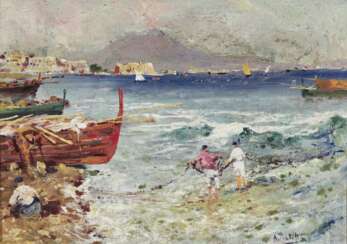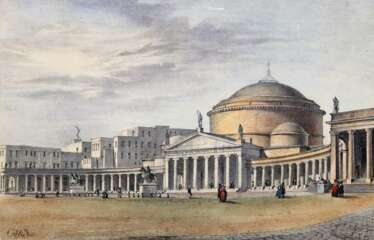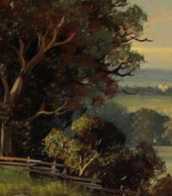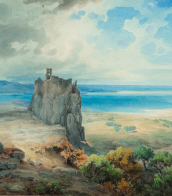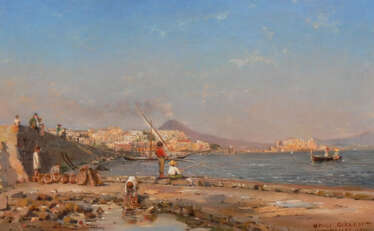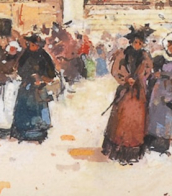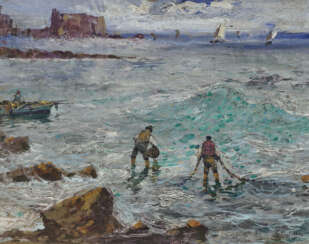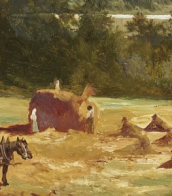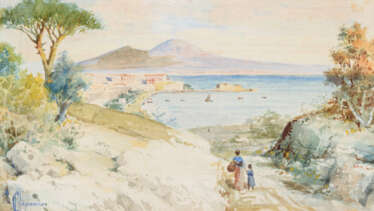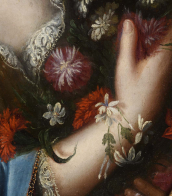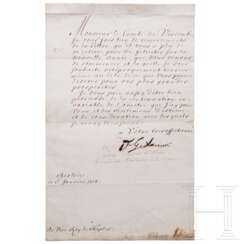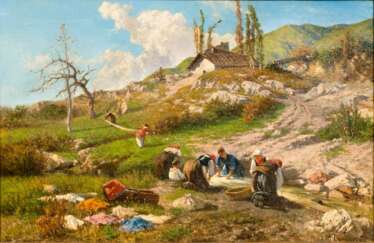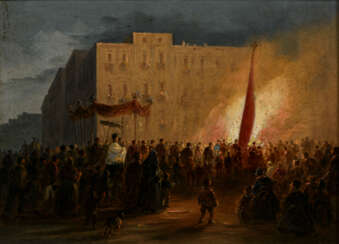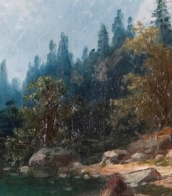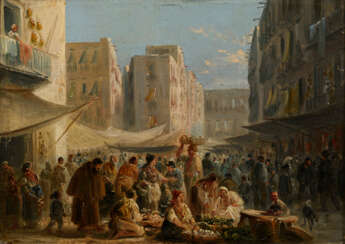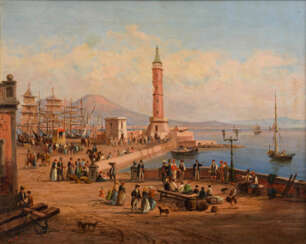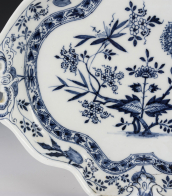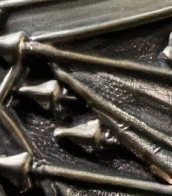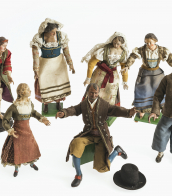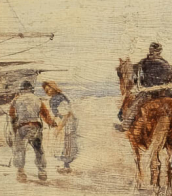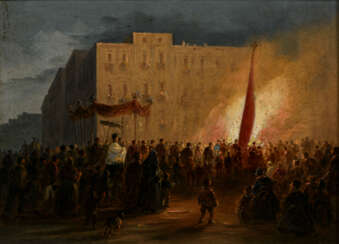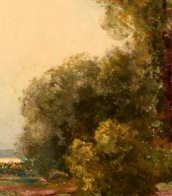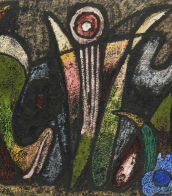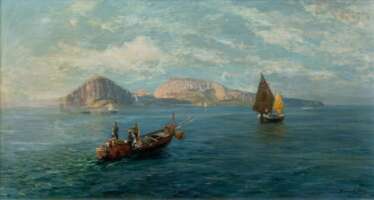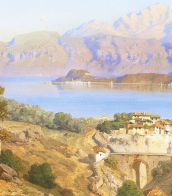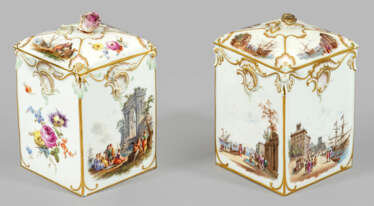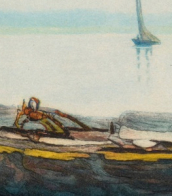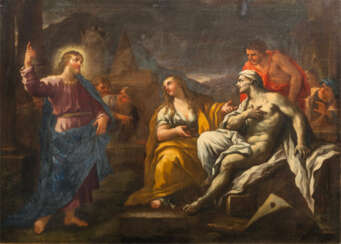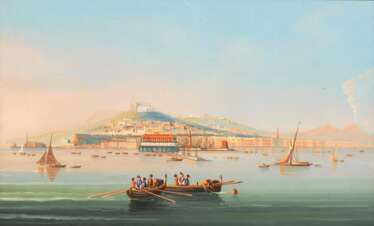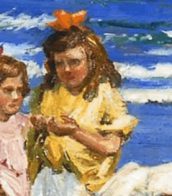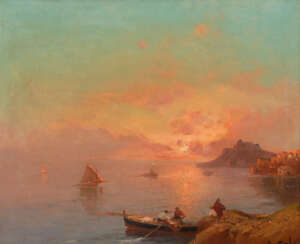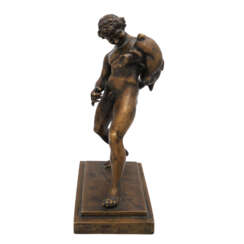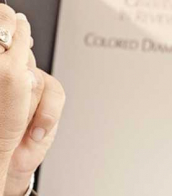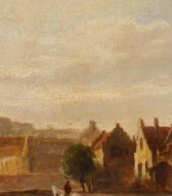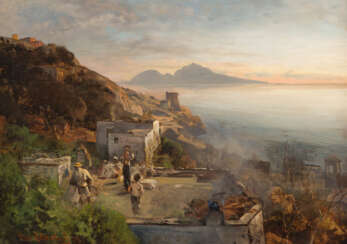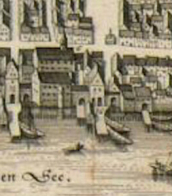neapel
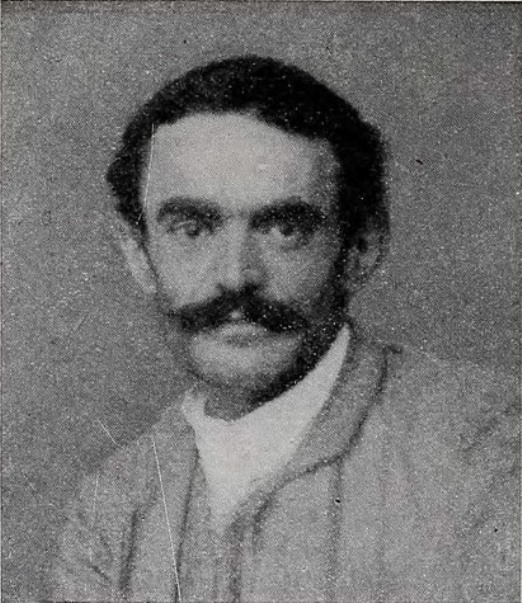
Attilio Pratella was an Italian marine and landscape painter.
Attilio Pratella received his first professional skills at the Trisi College, continued his studies at the Bologna Academy of Fine Arts and at the Academy of Fine Arts in Naples. His first paintings received positive feedback from the juries of exhibitions.
The artist executed miniature Neapolitan views for tourists and made sketches of paintings of products of the ceramic factory of the Cacciapoti brothers. After moving to the Neapolitan neighborhood of Vomero, Pratella began to paint views of the picturesque surroundings, the Gulf of Naples and Vesuvius. Soon a group of Vomeresi ("Vomeristi") formed around him, and the neighborhood where he lived gradually became an entire colony of artists.
In addition to Neapolitan landscapes, the artist created cityscapes of Paris and other European cities. In 1899 Attilio Pratella participated in the Paris Salon and received great recognition. Today his works are in the collections of the Museo del Capodimonte and the Galleria dell'Arte Ricci Oddi.
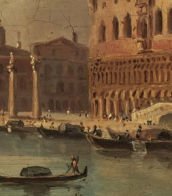
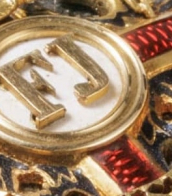

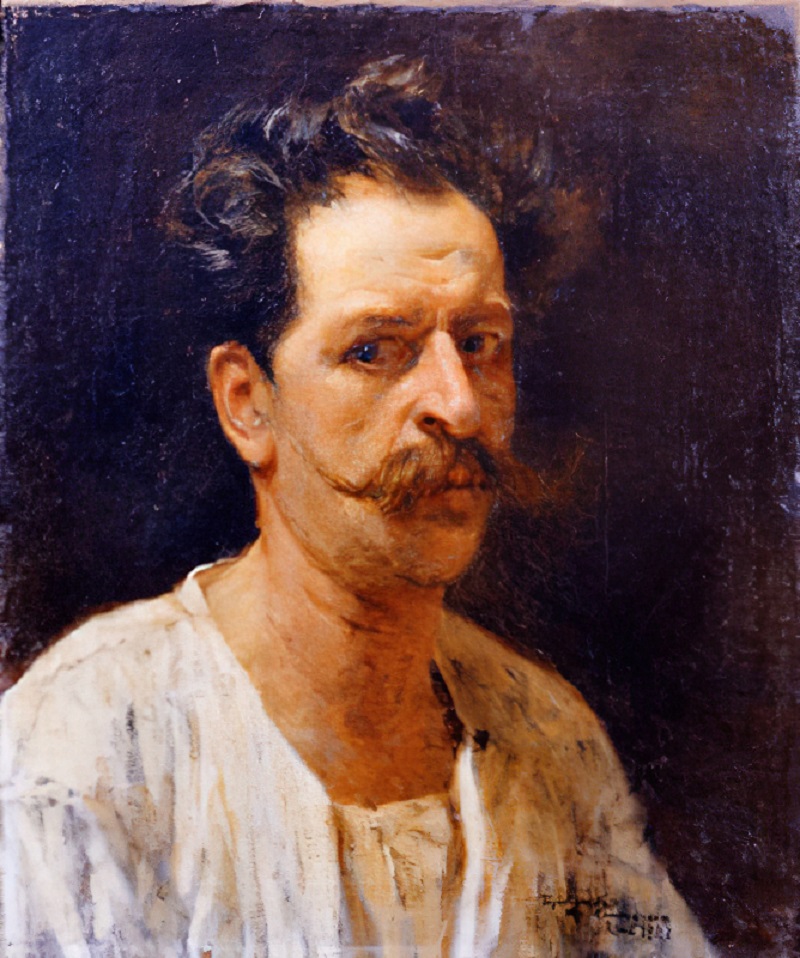
Michele Cammarano was an Italian realist painter. He is the author of numerous paintings in the battle genre. He studied painting at the Academy of Fine Arts in Naples.
In March 1870, during a trip to Paris, the artist met Gustave Courbet, whose work was close to his own views on art.

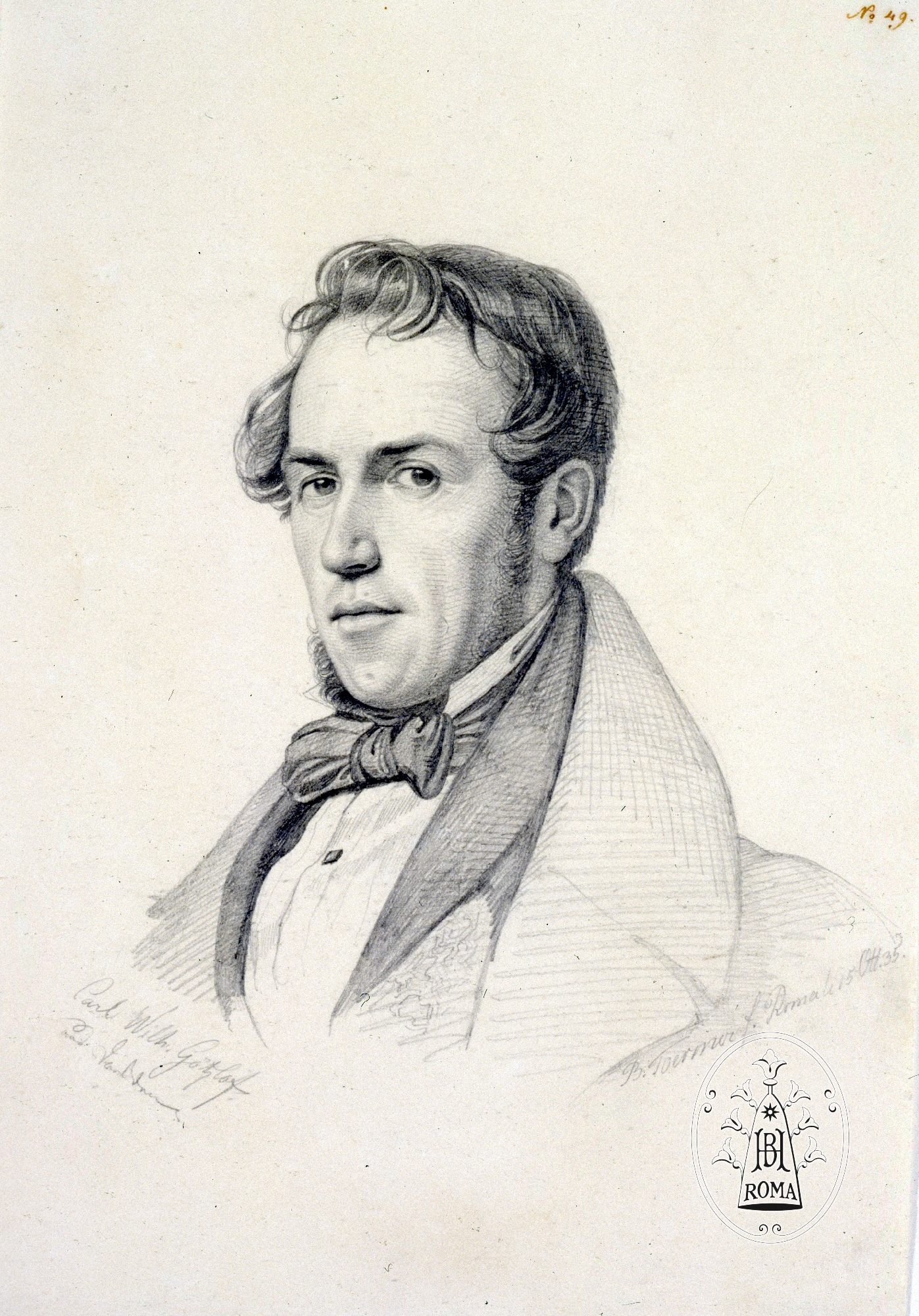

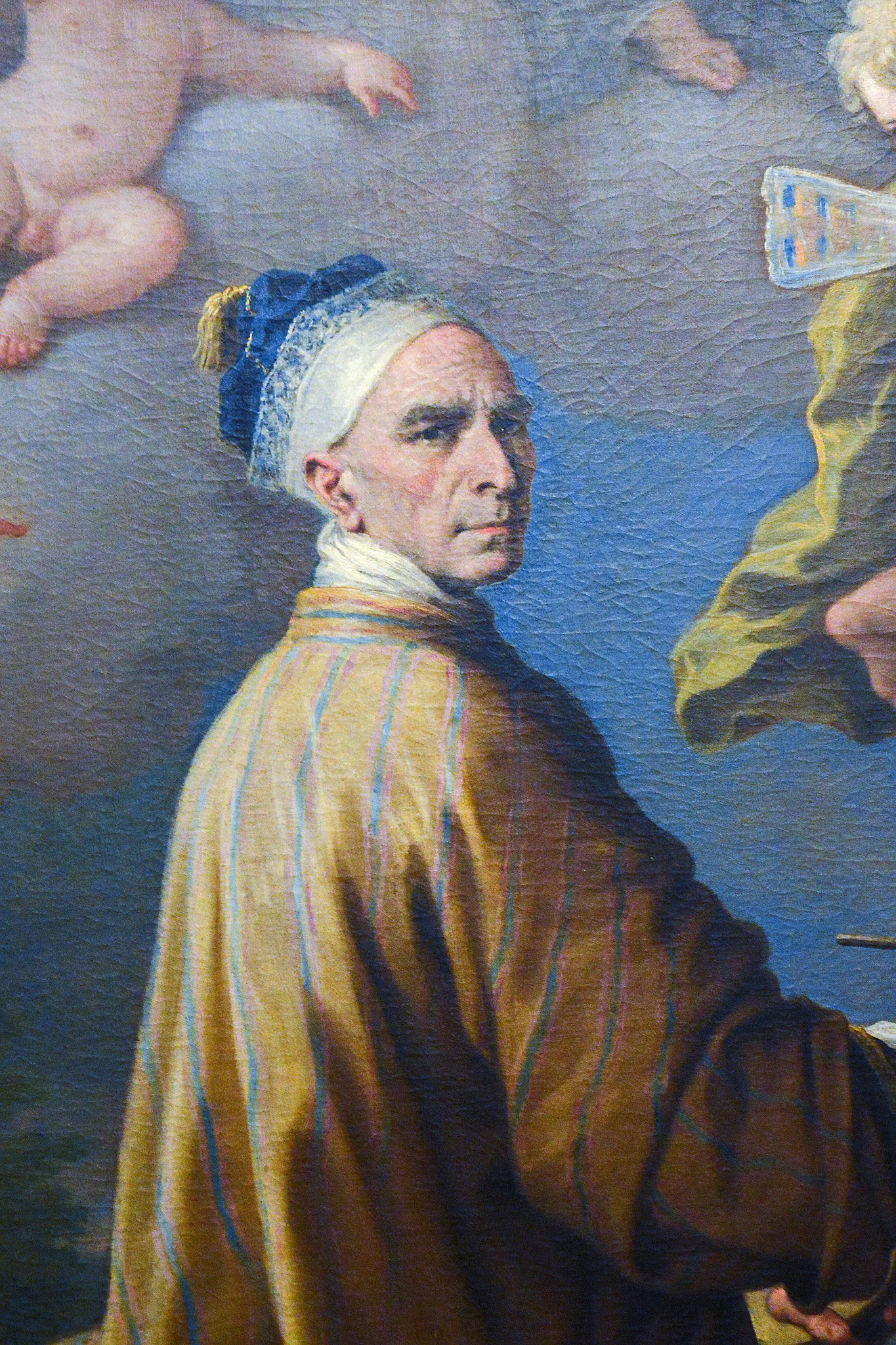
Paolo de Matteis was a distinguished Baroque painter known for his dynamic and expressive artworks. Matteis' training began with Francesco di Maria in Naples, followed by further guidance under the prominent painter Luca Giordano. His works are known for their vibrant compositions and dramatic flair, typical of the Baroque style prevalent during his time.
Paolo de Matteis' career was marked by significant contributions to the art world, including decorative schemes for Neapolitan churches like the vault of the chapel of San Ignatius in the church of Gesù Nuovo in Naples. His Assumption of the Virgin for the Abbey at Monte Cassino is another testament to his skill. Between 1723 and 1725, he spent time in Rome, receiving commissions from Pope Innocent XIII, further solidifying his reputation as a master painter.
Paolo de Matteis' influence extended beyond Italy. From 1702 to 1705, he worked in Paris, Calabria, and Genoa, showcasing his artistry to a broader European audience. In Genoa, one of his notable works was an Immaculate Conception with St. Jerome Appearing to St. Sevrio. His time in Paris was particularly significant, as it allowed him to infuse his Italian Baroque style with broader European influences.
Paolo de Matteis was not only a masterful painter but also a teacher. He nurtured the talents of several pupils, including Filippo Falciatore, Francesco Peresi, and members of the Sarnelli family. His legacy is carried forward through these artists, who were deeply influenced by his style and techniques.
For collectors and experts in art and antiques, Paolo de Matteis' works offer a captivating glimpse into the Baroque era, characterized by expressive brushwork, vivid color palettes, and dynamic compositions. His paintings remain a valuable part of the rich tapestry of Italian Baroque art.
To stay informed about Paolo de Matteis' masterpieces and their presence in the world of art sales and auctions, consider subscribing to our updates. This service will ensure you are always in the know about opportunities to explore and possibly acquire works by this celebrated Baroque artist.
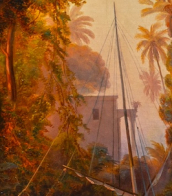

Paolo de Matteis was a distinguished Baroque painter known for his dynamic and expressive artworks. Matteis' training began with Francesco di Maria in Naples, followed by further guidance under the prominent painter Luca Giordano. His works are known for their vibrant compositions and dramatic flair, typical of the Baroque style prevalent during his time.
Paolo de Matteis' career was marked by significant contributions to the art world, including decorative schemes for Neapolitan churches like the vault of the chapel of San Ignatius in the church of Gesù Nuovo in Naples. His Assumption of the Virgin for the Abbey at Monte Cassino is another testament to his skill. Between 1723 and 1725, he spent time in Rome, receiving commissions from Pope Innocent XIII, further solidifying his reputation as a master painter.
Paolo de Matteis' influence extended beyond Italy. From 1702 to 1705, he worked in Paris, Calabria, and Genoa, showcasing his artistry to a broader European audience. In Genoa, one of his notable works was an Immaculate Conception with St. Jerome Appearing to St. Sevrio. His time in Paris was particularly significant, as it allowed him to infuse his Italian Baroque style with broader European influences.
Paolo de Matteis was not only a masterful painter but also a teacher. He nurtured the talents of several pupils, including Filippo Falciatore, Francesco Peresi, and members of the Sarnelli family. His legacy is carried forward through these artists, who were deeply influenced by his style and techniques.
For collectors and experts in art and antiques, Paolo de Matteis' works offer a captivating glimpse into the Baroque era, characterized by expressive brushwork, vivid color palettes, and dynamic compositions. His paintings remain a valuable part of the rich tapestry of Italian Baroque art.
To stay informed about Paolo de Matteis' masterpieces and their presence in the world of art sales and auctions, consider subscribing to our updates. This service will ensure you are always in the know about opportunities to explore and possibly acquire works by this celebrated Baroque artist.

